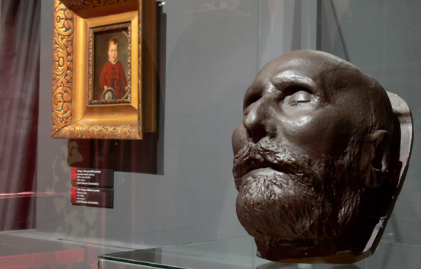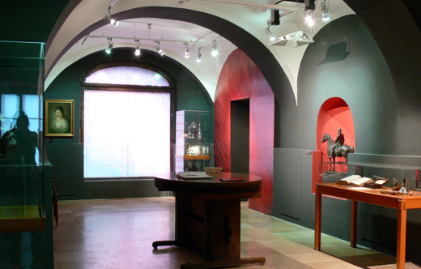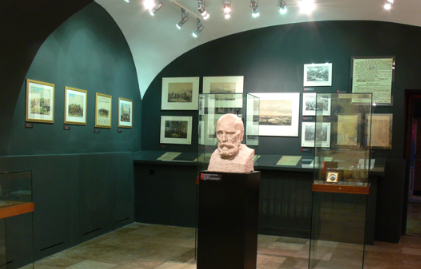The Injured Görgey
A Story Told For A Thousand Times A Little Bit Differently
In December 2010 a new temporary exhibition was opened at the Semmelweis Museum, which through the head wound of General Artúr Görgey presents the surgical, medical knowledge of the middle of the 19th century.
| Szabó László |
2011-04-15 22:42 |
The visitors can learn about the final phase of the 1848-1849 war of independence, about the surgical techniques of the period and about the personality of General Görgey at the same time.
 On July 2nd, 1849, in the heat of the battle of Komárom between the armies of General Haynau and those of the Hungarian general Görgey suffered a serious head wound from a grenade explosion. The further developments of the whole war depended on his health.
On July 2nd, 1849, in the heat of the battle of Komárom between the armies of General Haynau and those of the Hungarian general Görgey suffered a serious head wound from a grenade explosion. The further developments of the whole war depended on his health.
An Injury And Its Aftermath
Görgey’s head wound was attended by doctors Viktor Mihálik and Károly Orzovenszky, their treatment proved successful and in four days the general could take part in the war council in Komárom. On the ninth day after his injury, Görgey led his army of 25 thousand soldiers towards Arad to join the divisions of General Bem so that they could meet the Russian-Austrian army and fight. On the 13th day he took the town of Vác from the Russians, but during these days his wound started to putrefy and had to be operated. In two days Görgey was on horseback again and continued to lead his men on the way to Arad. Before he could meet the army of general Bem the latter met the Russian-Austrian armies near the town of Temesvár and was beaten disastrously. When Görgey reached Arad he realized that there was no Hungarian army left to join. In this situation he saw no other way but to surrender to the Russian-Austrian armies on 13th August, 1849.
 Wound On The Skull
Wound On The Skull
The exhibition of the Semmelweis Museum of History of Medicine presents the surgical knowledge of the mid 19th century in this special context. During the middle of the century, before the impact Ignác Semmelweis, two distinctly different schools were followed in connection with head wounds. According to the tradition of Hippocrates the wounds were to be attended openly, the putrification is the natural side symptom of the healing process. In medieval Europe, thanks to Arab impact, another view became quite popular, which recommended the quick stitching of the wound. At the time of Görgey’s injury the dispute among the representatives of the two traditions was still going on. The first two surgeons of Görgey, Orzovenszky and Mihálik cleansed the wound and stitched it closely, but it started to putrefy in a few days. When Görgey was operated on again, it was carried out by doctor Lajos Markusovszky. He cleaned the wound and dressed it loosely, and recommended that the wound should be cleaned regularly and redressed. This was the way Görgey’s wound was attended from then on and the general survived his injury and lived another 67 years.
 The Objects of the Exhibition
The Objects of the Exhibition
The core of the exhibition is the series of medical and surgical instruments from the 19th century, are not only amazing but beautiful as well, each piece is like an object of applied art..
The visitors can see skull drills, bone saws, vein holders, bone membrane scraper and other curious instruments.
The last section of the exhibition presents the events of Görgey’s years after the war, his every day life and personality.
More photos